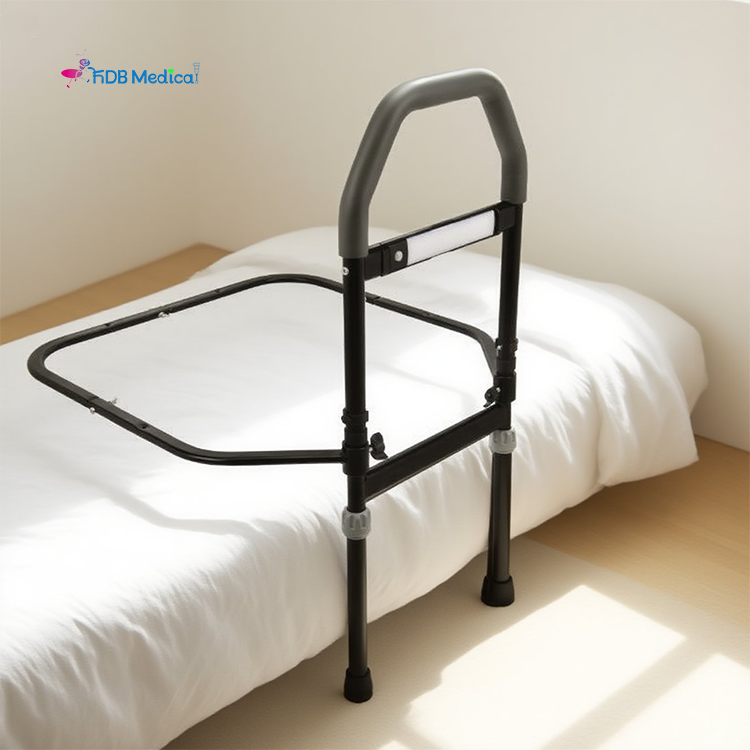The Significance of Bedside Rails in Safety
Bedside rails provide for the safety of patients during recumbence. They provide a barrier that prevents patients, particularly those who may struggle to move or risk falling, from rolling out of bed. This is significant, as falls can result in major injuries and slow a patient’s recovery. Healthcare professionals can ensure patients are safe during time at the hospital or anywhere in the nursing home by getting the aid of bed guards.

Types of Bedside Rails in Healthcare
There are various kinds of bed side rails designed for different patients. Some side rails are stationary and can’t be adjusted, while others can be raised up or down to suit patients of various heights. There are also optional removable bedside rails that attach and detach from the bed. These varied types help ensure that patients receive the proper support and protection as they lie down.
How to select bedside rails for patients
When hospitals choose bedside rails, they consider the patient’s age, how well they can move and their health. For older patients, that might include special rails on the bedside that provide more support. Patients with disabilities might require accessible bed rails to adapt to their unique needs. When healthcare providers select the right type of side rail, they can make recovery a safer and more comfortable environment for patients.
Pros of Adjustable and Removable Bedside Rails
Height-adjustable bed side rails for elderly bedside rails can be raised or lowered so that healthcare providers can adjust them for each patient. This is good for patients who may need to reposition themselves. Detachable bedside rails greatly facilitate user to lower or raise the bed to assist patient Removable bedside rails are convenient for storage. These characteristics make the experience of patients in hospitals and nursing homes a better one.
Specialty Bedside Rails for Elderly and Disabled Pulldown Bed Aid for Seniors.
Being among the elderly or otherwise infirm can also make it harder to stay safe and healthy. They are specialty bedside rails made specifically for them, complete with more padding, grab bars and bedside safety rail handrails for added comfort and security. They allow older and disabled patients to feel more comfortable and to reduce the risk of falling over while resting. Specialty bedside rails can help healthcare workers to create a safe and inviting environment for those with special needs.
Finally, bed rails are very important for maintaining patients safe in both the hospital and nursing home settings. Healthcare workers can promote patient healing by providing the right types of mattresses to the right patients: fast-acting, effective pressure reduction mattresses for the critically ill minimally reactive or slightly delayed pressure reduction mattresses for patients bariatric adjustable bed rails or geriatric patients or those with varying body temperature (thermoregulation) needs air-fluidized therapy surfaces for patients with severe pressure sores In this article Pressure-Sore-Prevention-Mattresses 101 Selecting the Best Mattresses for Every Patient By considering why they matter, the various types, properly sizing mattresses to the patient and using specialty rails for those who are elderly and disabled, the healthcare provider can play a critical role in helping patients heal and get well.